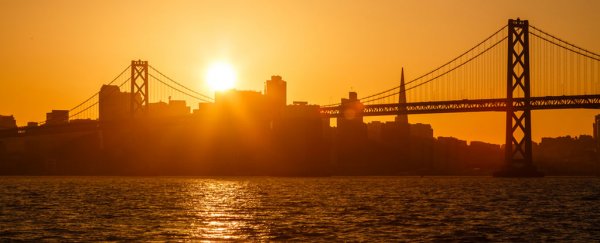It's no secret that solar power represents a huge, largely untapped source of electricity production in the US, with a recent study by the Department of Energy estimating that rooftop solar alone could satisfy almost 40 percent of US electricity demand.
Now San Francisco is boldly pushing ahead to seize the potential of solar, after the city's board of supervisors voted unanimously on Tuesday that all new buildings will now be required to install solar panels on their roofs.
Lancaster and Sebastopol, both smaller cities in California, also have this requirement, but San Francisco will now be the first major American city to make solar mandatory for new residential and commercial constructions.
"By increasing our use of solar power, San Francisco is once again leading the nation in the fight against climate change and the reduction of our reliance on fossil fuels," said supervisor Scott Wiener, who proposed the legislation.
"Activating under-utilised roof space is a smart and efficient way to promote the use of solar energy and improve our environment. We need to continue to pursue aggressive renewable energy policies to ensure a sustainable future for our city and our region," he added.
Under existing Californian law, 15 percent of the roof area on new small and mid-sized buildings (10 floors or less) must be "solar ready", meaning the roof is unshaded by the building itself and is free of obstructions.
But the new legislation, which is set to come into effect next January, will take things a step further, requiring this "solar ready" roof area to actually have solar panels installed.
It's a big difference. Based on current construction projects in the pipeline, the law is expected to see 50,000 new solar panels installed, which would prevent almost 23.8 million metric tonnes (26.3 million tons) of carbon dioxide being pumped into the atmosphere each year. This is about the same as keeping 5,000 cars off the road for a year, and would be a massive saving for the environment.
In addition to solar roofs, follow-up laws that are expected to be proposed will relate to 'living roofs' lined with plants, which could be installed in situations where solar panels aren't feasible. Living roofs without solar panels don't generate electricity, but they do offer other environmental benefits, such as natural insulation, capturing stormwater, absorbing atmospheric pollution, and providing a habitat for animals and insects.
As the cost of solar continues to drop around the world, we expect San Francisco's initiative here will be followed by more major US cities soon.
Here's hoping!
